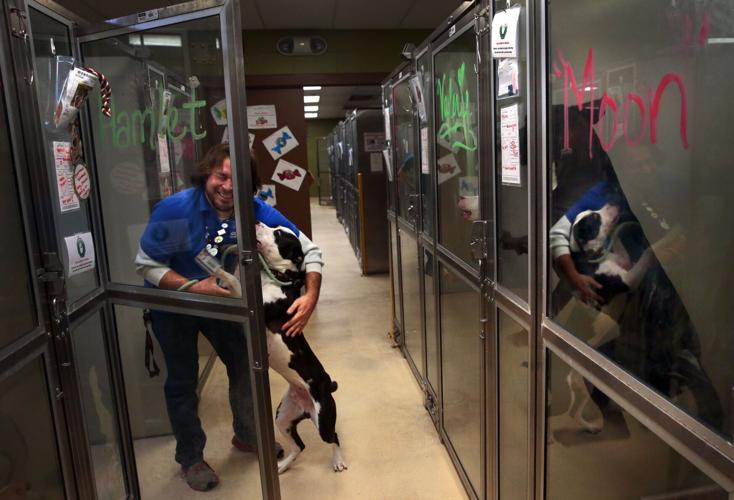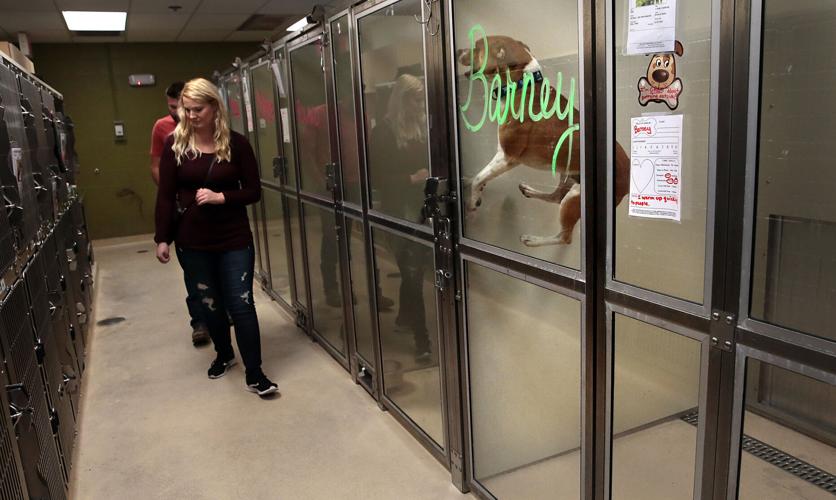OLIVETTE ÔÇö 51║┌┴¤ CountyÔÇÖs animal shelter, in desperate need of space in its dog kennels, will begin euthanizing more animals it deems unfit for adoption.
The county wants to save as many animals as possible, said Kate Donaldson, deputy director of the county public health department, which oversees animal control. But the shelter has become a warehouse for dangerous dogs that arenÔÇÖt fit for the community, leaving it unable to pick up strays unless theyÔÇÖve bitten or attacked someone.
And the long stays are bad for the animals.
ÔÇ£ItÔÇÖs just not a good environment for those dogs to be in for a long time,ÔÇØ Donaldson said.
The change comes after a rocky period for the countyÔÇÖs animal control department and as a nonprofit organization is set to take over operations at the shelter.
People are also reading…
The COVID-19 pandemic left many pet owners unable to care for their animals. County animal control, short on staff, space and money, has been operating in ÔÇ£emergency statusÔÇØ for more than a year. Some animal control officers have been asked to help out in the shelter when theyÔÇÖre needed on the street.
And because nonprofit shelters wonÔÇÖt keep dogs that bite or attack, a disproportionate number of dangerous dogs end up in government facilities.
ÔÇ£ItÔÇÖs incredibly challenging when youÔÇÖre the shelter that gets all the aggressive dogs,ÔÇØ said Pam Walker, a former chief of the 51║┌┴¤ city health department. ÔÇ£There really canÔÇÖt be zero kills. ItÔÇÖs tragic, but the government seems to be the one that is saddled with that decision.ÔÇØ
The county shelter achieved no-kill status ÔÇö which limits euthanasia to 10% of the population ÔÇö under the its former director, Beth Vesco-Mock, who started in 2017. Former County Executive Steve Stenger fired Vesco-Mock just months later over complaints about her management and conditions at the shelter. An audit ordered by County Council later revealed the shelter had fudged kill rates, kept animals longer than necessary and couldnÔÇÖt control infectious disease because of overcrowding.
In 2019, volunteers sued the county, alleging they were banned from the shelter for criticizing its conditions.
Last fall, the county began seeking a nonprofit to run and improve operations there and this spring awarded a five-year contract worth $15.8 million to the Animal Protective Association of Missouri, or APA, in a competitive bid process.
On Aug. 22, animal control staff began reviewing animals case-by-case to determine if they can be adopted or treated for illness, said health department spokeswoman Riane Cleveland. The department ÔÇ£must euthanize animals that are not fit for the community, are dangerous, severely sick or injured,ÔÇØ Cleveland said in an email.
ÔÇ£Euthanasia is never used for space,ÔÇØ Cleveland said.
The APA, which takes over this year, plans to run the shelter much like it does its flagship location in Brentwood, said CEO Sarah Javier. Though 97% of animals at the APA leave alive, well above the no-kill threshold, the organization doesnÔÇÖt use that term. Javier said it incorrectly suggests there are zero kills at a shelter and implies there are organizations whose purpose is to kill animals.
At its Brentwood location, the organization uses a strategy called ÔÇ£socially conscious animal sheltering,ÔÇØ which assesses each animal individually for its needs. The goal is to find a safe, loving home for each animal, Javier said.
ÔÇ£We also want to make sure we are balancing the needs of the animal with the needs of a community,ÔÇØ Javier said. That could mean euthanizing dogs that arenÔÇÖt safe to keep as pets.
The APA decides a dog isnÔÇÖt safe for the community after a review by multiple experts. A veterinarian, the organizationÔÇÖs veterinary director and an expert in animal behavior would all assess the dog, according to Javier. They also give the dogs time to decompress once they come to the shelter because stress can exacerbate behavior problems. Sometimes a dog can thrive in a foster home or with an organization that specializes in dogs with behavior issues.
Some people who work at animal control will have to reapply for their jobs once the APA takes over, according to Cleveland, the health department spokeswoman.
The department has 64 positions in its annual budget for the shelter, and there are 26 vacancies. The county employs 17 animal control officers, including two supervisors.
Dara Ashby, 58, a longtime animal welfare advocate and volunteer from Ferguson, blames the problem on unregulated ÔÇ£backyard breeders.ÔÇØ ItÔÇÖs impossible to achieve no-kill goals if there arenÔÇÖt stronger rules and better enforcement, Ashby said.
ÔÇ£ItÔÇÖs just heartbreaking. Rescue groups canÔÇÖt keep up. TheyÔÇÖre packed. Shelters are packed,ÔÇØ Ashby said. ÔÇ£IÔÇÖve never seen so many dogs running loose.ÔÇØ













